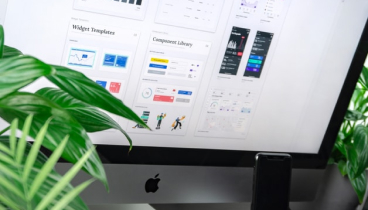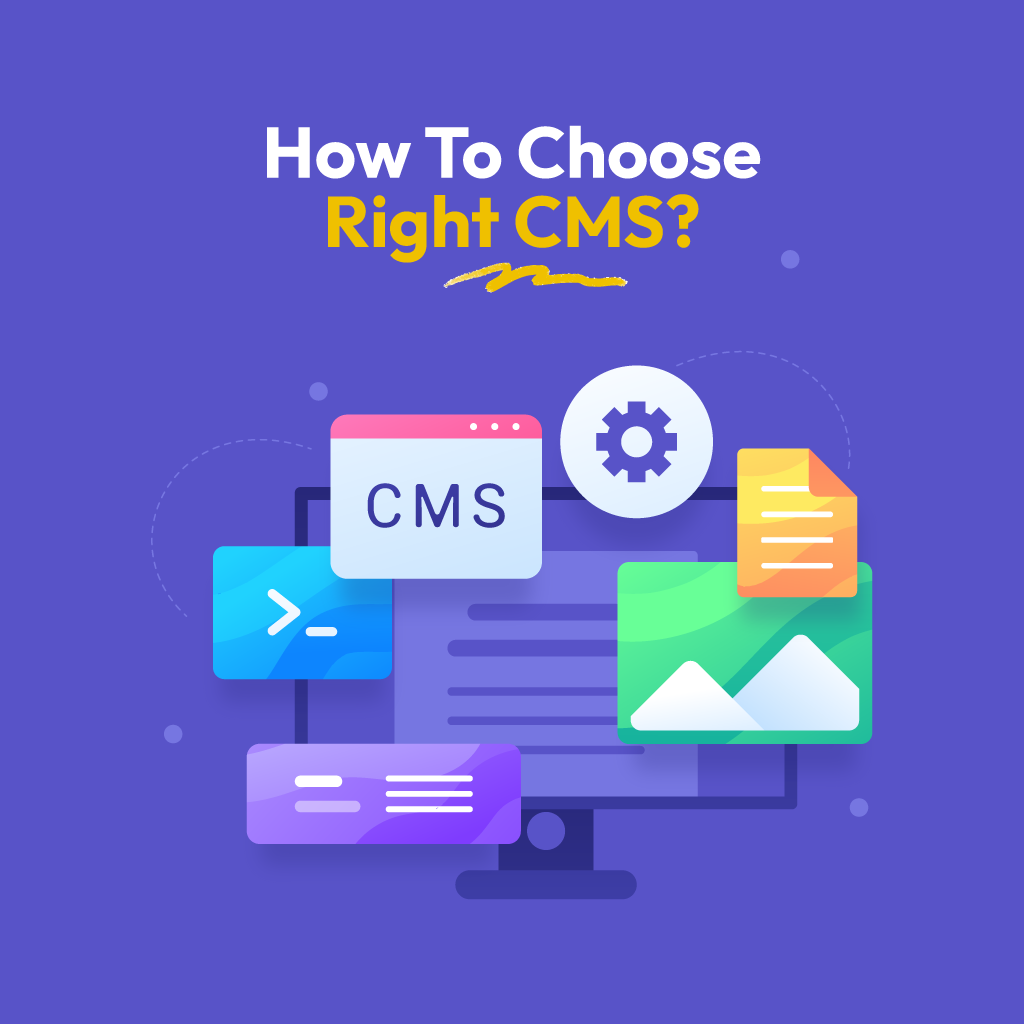A solid web design is important for enhancing conversions, since it directly impacts how users navigate and interact with a website. First impressions are always important, as users generally decide whether to stay or depart in seconds. A clear layout, easy navigation, and a mobile-friendly design establish trust and encourage visitors to execute desired activities, such as making a purchase or completing a form. Elements such as strategic call-to-action button placement, rapid loading speed, and appealing images help visitors progress easily through the buyer’s journey. In essence, great site design converts casual visitors into repeat consumers by combining beauty and usability.
To clear things out, we have listed 10 common web design mistakes that kill conversions. Follow these and find out what kills conversions on websites.
Avoid Intrusive Pop-ups
Pop-ups are mostly unwanted popping up messages, which are little windows that appear unexpectedly on a computer or mobile device, typically in a web browser, to display advertisements, notifications, or warnings. It is usually a handy way to collect cookie consent, promote products, and highlight promotional offers.
Problems with Pop-ups
However, too many pop-ups can reduce the true purpose of the website by blocking important site content, stealing attention, and wasting the time of users.
At the same time, full-screen pop-ups, demanding user information like emails, asking for product reviews & user feedback are also frustrating for the users. They often lead to quick leave among users and seek alternative websites. As for the solution, here are some tricks you can apply.
Solution
To overcome these issues and properly incorporate pop-ups, consider them an extension of your site’s design rather than a disruptive add-on.
Consider designing these pop-ups like they appear on the side of the screen without blocking the important contents of the website, such as menu bars and options to direct to other pages of the website. Also, use color combinations that don’t hurt the eye and draw attention.
It’s important to keep pop-up text clear because people are more likely to engage when they can rapidly understand the message and its significance. To catch short-term attention, each word must be impactful.
Always try to show pop-ups when they are least likely to disrupt the user’s main goal. This could happen when a user has spent a certain amount of time on a website, navigated a long distance, clicked a specific button, or as an ‘exit-intent’ pop-up when they are about to depart.
Poor Navigation & Site Structure
Website browsing feels comfortable as long as users can find out easily what they are looking for and manage to understand all the information without hurting their brains and running you of patience. In order to get higher website conversion rates, your website should be accessible and user-friendly to everyone.
Problems with Poor Navigation
First of all, poor navigation frustrates users heavily and forces them to leave the site. You know the feelings of looking for something but not finding it. As time passes, the frustration increases at an exponential rate.
Also, search engines follow clear formations to index your content and rank your website. They also prioritize user-friendly web design and rank them top of the search. Moreover, mobile users also rely on simplicity and speed.
Solution
To prevent misleading your consumers, plan your website around their needs rather than your own assumptions. Do not presume that visitors understand your solution or know where to proceed on your website. Instead, actively include user feedback in your design process. When visitors land on your homepage, they should immediately understand who you are and what you do. Clearly demonstrate how your products and services solve their concerns.
Use a clean structure with properly labeled menu items organized in a logical sequence. A sitemap facilitates both human navigation and search engine crawling. Include a link in the footer.
Slow Page Loading
With high-speed internet connections, users now don’t expect even a second of delay to jump on any website simply after clicking it. If it takes too long to load, chances are very high that users will bounce to other sites without even seeing your content.
Problem with Slow Loading Speed
Slow page loading is not just frustrating; it kills conversions. According to research, pages that load in 2.4 seconds earn a 1.9% conversion rate, whilst those that take 5.7 seconds or more see conversions drop to 0.6%.
Also, it hurts the organic rankings. Loading speed is one of the key factors in Google ranking.
Solution
Websites with high-resolution images and files tend to run slowly. To overcome this, compress large images and files. You can use tools like WebP & TinyPNG to reduce file sizes without compromising quality. Compress CSS, JavaScript, & HTML files as well.
Try to minimize HTTP requests by combining the scripts, stylesheets, and third-party plugins for faster loading. Also, track your returning visitors and store their resources locally to help them load faster.
Choose high-performance hosting sites like .com, .net, .org, etc. And finally, distribute your content using multiple servers around the world to load faster from any location. Use a powerful content delivery network.
Non-Responsive Design
Modern web design best practice reflects a perfect responsive website. Over 64% of all searches are now done on mobile devices. If you don’t use responsive design, you will lose sales and be less visible in search results, which will hurt your bottom line.
Google gives mobile-friendly websites more weight in search results. This means that flexible design is important for both user experience and SEO.
Problem with not Optimizing Across Different Devices
A responsive website changes itself instantly to fit different screen sizes and devices, so the experience is the same on all of them. When your website is not responsive, mobile users are frustrated and abandon it due to small content, horizontal scrolling, and unsuitable navigation.
Ignoring mobile optimization not only frustrates consumers but also leads to missed opportunities and wasted revenue in an increasingly mobile-accessible market. This website design mistake can lose you a lot of visitors, conversions, and purchases on one device or another.
Solution
So, the solution is to create a site that automatically adapts to any screen size—phone, tablet, or desktop—for constant use. Enhance this by using large, easy-to-read fonts, plenty of space, and call-to-action buttons that are clear and prominent enough to be touched.
Also, focus on compressing pictures, using a Content Delivery Network (CDN), and reducing heavy scripts to keep pages loading quickly on mobile connections. Before going live, test your website across different devices and screens to fix navigation issues, broken links, and images. Once you are live, keep checking for issues on different devices.
Poor Calls-to-Action (CTAs)
CTA is a prompt design that elicits an instant user response, such as clicking a button, viewing an image, signing in, or purchasing products. A CTA instructs your visitors what to do next: fill out a form, call your office, download a resource, or make a purchase.
Problems with Weak CTAs
Users are considerably less likely to take action if your call-to-actions are ambiguous, difficult to find, or ineffective. As a result, users become confused and don’t know, in most cases, how to proceed in the next step.
This often led to missed opportunities for conversions, and fewer opt-ins resulted in missed sales chances.
Solution
To design effective CTAs, keep three ideas in mind: visual design, placement, & direct messaging.
To get people’s attention, your CTAs must be visually different. Make buttons stand out by utilizing contrasting colors and using relevant hover effects. The size needs to be large enough to be easy to see but not intimidating, especially on mobile devices, where it must be tap-friendly.
Place your key CTA prominently in the user’s natural eye flow and pathway through the page. For lengthier pages, consider repeating CTAs at logical intervals, especially after establishing value propositions or addressing potential issues.
Also, use clear, actionable language such as “Call Now,” “Request a Free Quote,” “Get Started,” “Submit Here,” or “Book Your Appointment.”
Fail to Meet SEO Demands
Your website is working perfectly without any issues, but it won’t bring any fruitful results if people can’t find it. Website design is more than simply looks; it is about developing a framework that search engines can explore and understand. Many designers prioritize visual appeal above critical SEO aspects that reduce search visibility.
Problem with Neglecting SEO Basics
Without a proper SEO plan, the search engines will fail to recognize your website and index your content as well. Users won’t find your services, and it won’t bring any traffic to your website. And without traffic, a website fails to make conversions and fails to truly serve the purpose.
Proper SEO work brings authority and trust between the users and Google. If you fail to establish this arrangement, your website is simply a boat without any rudder.
Solution
To help search engines and users navigate your site, optimize your title tags, meta descriptions, picture alt text, and internal linking structure.
Your website should include correctly organized H1 tags that are “above the fold” and visible to both visitors and search engines. Avoid embedding vital text within images, as search engines cannot read it; instead, use indexable text overlays.
In case of URLs, use clear keywords rather than messing with numbers and symbols. Create content using SEO keywords, but don’t overuse it, sacrificing the readability score.
When using modern design features such as endless scroll, keep in mind that search engines have boundaries. Google cannot crawl infinitely scrolling pages successfully, so consider using page navigation like “Load More” buttons as alternatives. Structure your site with logical internal links between key sections, and each page should contain substantial, unique information rather than duplicated content.
Too Many Website Elements
Too many website elements than necessary is actually annoying and often fails to serve the true purpose of the website. Also, this website design mistake leads to a cluttered user interface (UI). A good website allows people to navigate easily and intuitively, free of extraneous clutter.
Problem with Extensive Element
If you fancy your website with too much content it will affect the attention of the customers directly. They often get confused about what to buy or what service to choose. Rather, you should focus on the product that you want your customers to buy intuitively.
Solution
In case of content creation, it’s not necessary that you need content that covers all the topics. But, focus on your services and create content that helps your website users. As soon as your customers find the desired conten,t they will be happy. So, don’t complicate them with overextensions.
Incorporating negative space, sometimes known as white space, is more than a trend. Increasing the negative space between parts makes interfaces appear cleaner and naturally pulls client’s attention to your most critical material.
Prioritize the most critical items by analyzing user activity to determine which elements customers prioritize. Once found, you can deliberately shift or remove anything that isn’t meeting your users’ needs.
Lack of Quality Content & Imagery
Your website’s content is one of the most significant components in engaging visitors and ranking high in search engines. Users will leave if your material is weak, obsolete, or irrelevant, and Google will follow suit. It will be a major website design mistake and turn down the conversion rate.
A content with high high-quality image serves as an entrance to your content. A catchy and relevant content image always attracts the viewers and directs them to your content
Problem
Search engines reward websites for providing useful, relevant, and trustworthy information. If your sites do not help readers solve genuine problems or answer real queries, they will be ignored in favor of more relevant material.
The same goes for the imagery as well. If your image is not relevant to the topic of the content and also not very appealing, it encourages users to click and view inside the content. So, it will directly affect your website conversion rate.
Solution
Make sure your content is written by experts who have knowledge about the topics and explore more to make it perfect. Google always pays higher attention to content written by experts. Plus, people also need to believe what they are gaining is trustworthy.
Update old contents and move them below to the list if they are no longer relevant to keep up with the trending topics. For example, a list of the best headphones in 2010 is not compatible with a list made in 2025.
Cite references and like to other expert content sources to help your readers. Citing outside sources builds trust among the readers.
Choose the relevant image in a sense that you are advertising your content to your customers so that they directly click on your content. Maintain image quality with resolution, but compress the file size to reduce the loading time,
Neglecting Trust-Building Essentials
Your website must look natural and trustworthy instead of just using too many bold design tools and false content to show something that you are actually not worthy of. Trust is especially vital in competitive or high-risk industries such as healthcare, finance, and e-commerce, where customers must feel safe throughout every transaction.
Problem with Untrustworthy Website Design
Users always look for assurance that what they are looking for is authentic and trustworthy. If you fail to ensure that your customers will no longer browse your website and even leave a negative review.
As a result, that will flag your website and seriously affect your conversion rate.
Solution
In case of security concerns, install an SSL certificate to protect your data and establish confidence through a secure connection. Also, displaying honest user feedbacks and reviews from happy customers shows more credibility and transparency.
Keep track of trending topics that suit your website and publish new contents regularly. This shows proof of your brands continuous presence in the market and alignment with the latest updates as well.
For further security, provide a valid contact info and maintain communication with your customers directly. Create a chat box for communicating with customers.
To increase trust in your business processes, include pages for Terms of Service, Privacy Policy, and Return/Refund Policy. Highlight certifications and security badges to gain trust of your clients.
Neglecting Website Maintenance
Checking your websites on a regular basis, helps to find out problems and fixing bugs that migh affect conversions. After running it thousands and going live simply doesn’t ensure there won’t be any problem in the future. Rather, It requires regular maintenance to function properly, remain safe, and deliver a seamless user experience.
Problem with Ignoring Website Maintenance
Ignoring website maintenance might drastically harm your business. Outdated software and plugins make your website vulnerable to hackers and security risks. Slow loading times, broken links, and poor design upgrades annoy and drive people away.
Search engines penalize neglected websites, lowering their rankings and visitors. Without backups or frequent updates, you risk losing data and experiencing unexpected downtime. In the long term, ignoring maintenance undermines your credibility, costing you clients and cash.
Solution
To maintain maximum security and functionality, update your content management system (for example, WordPress) and third-party solutions on a regular basis. Audit for technical issue like repairing broken links, duplicate material, unoptimized pictures, and missing meta tags. These minor flaws build up to harm both UX and SEO.
Monitor Site Speed by using Google PageSpeed Insights to identify loading difficulties and adopt speed-boosting measures such as caching, compression, or code optimization. And don’t forget to backup your website regularly.
Final Words
A well-designed website is a valuable company asset that directly affects your bottom line. A successful website performs on the combination of aesthetics which is visual confrontation & seamless navigation, quality product and content creation, speed management, and complentary SEO performance. Keep these website design mistakes in your mind and the conversions will just happen.







